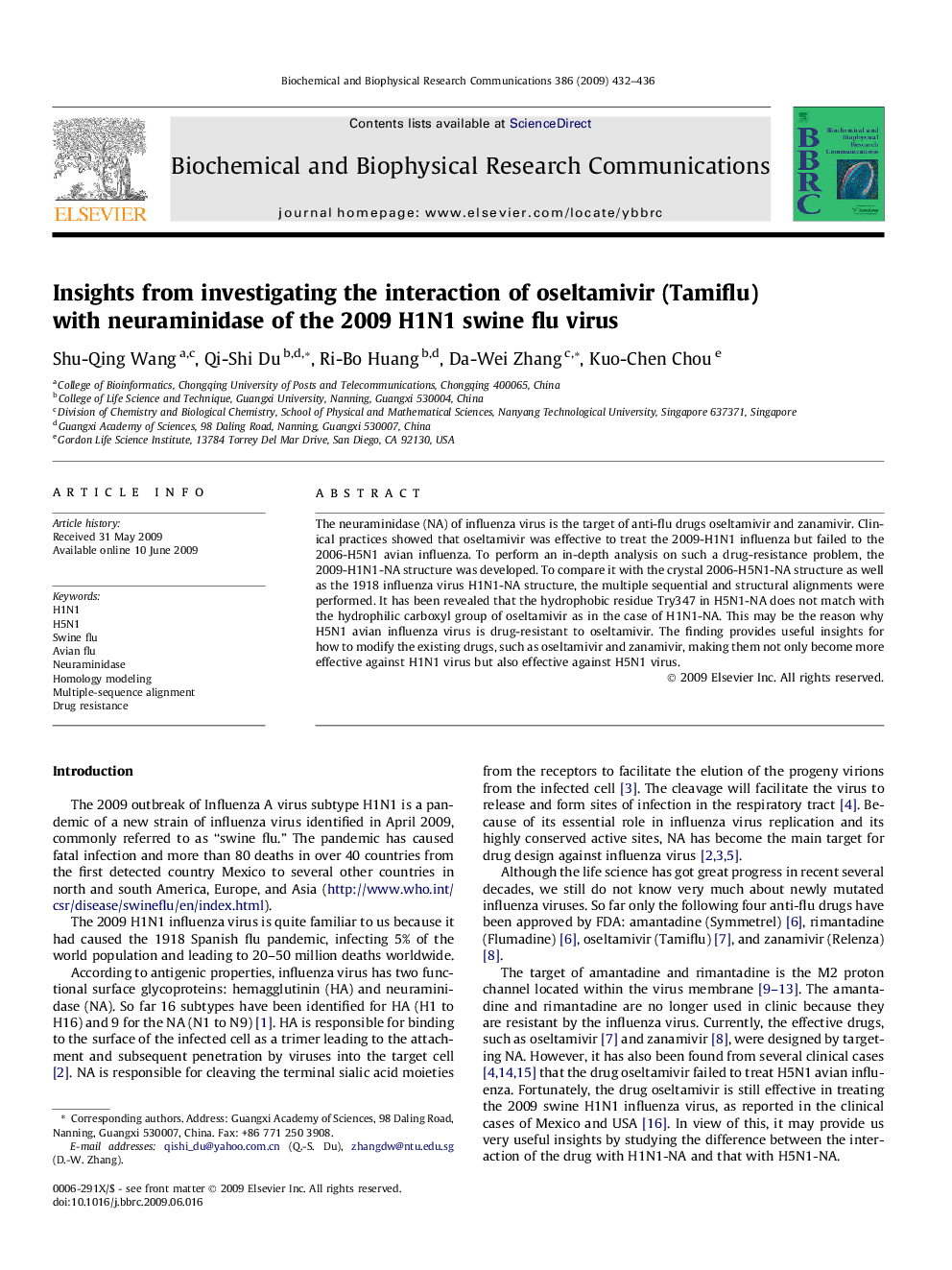| Article ID | Journal | Published Year | Pages | File Type |
|---|---|---|---|---|
| 1933362 | Biochemical and Biophysical Research Communications | 2009 | 5 Pages |
The neuraminidase (NA) of influenza virus is the target of anti-flu drugs oseltamivir and zanamivir. Clinical practices showed that oseltamivir was effective to treat the 2009-H1N1 influenza but failed to the 2006-H5N1 avian influenza. To perform an in-depth analysis on such a drug-resistance problem, the 2009-H1N1-NA structure was developed. To compare it with the crystal 2006-H5N1-NA structure as well as the 1918 influenza virus H1N1-NA structure, the multiple sequential and structural alignments were performed. It has been revealed that the hydrophobic residue Try347 in H5N1-NA does not match with the hydrophilic carboxyl group of oseltamivir as in the case of H1N1-NA. This may be the reason why H5N1 avian influenza virus is drug-resistant to oseltamivir. The finding provides useful insights for how to modify the existing drugs, such as oseltamivir and zanamivir, making them not only become more effective against H1N1 virus but also effective against H5N1 virus.
